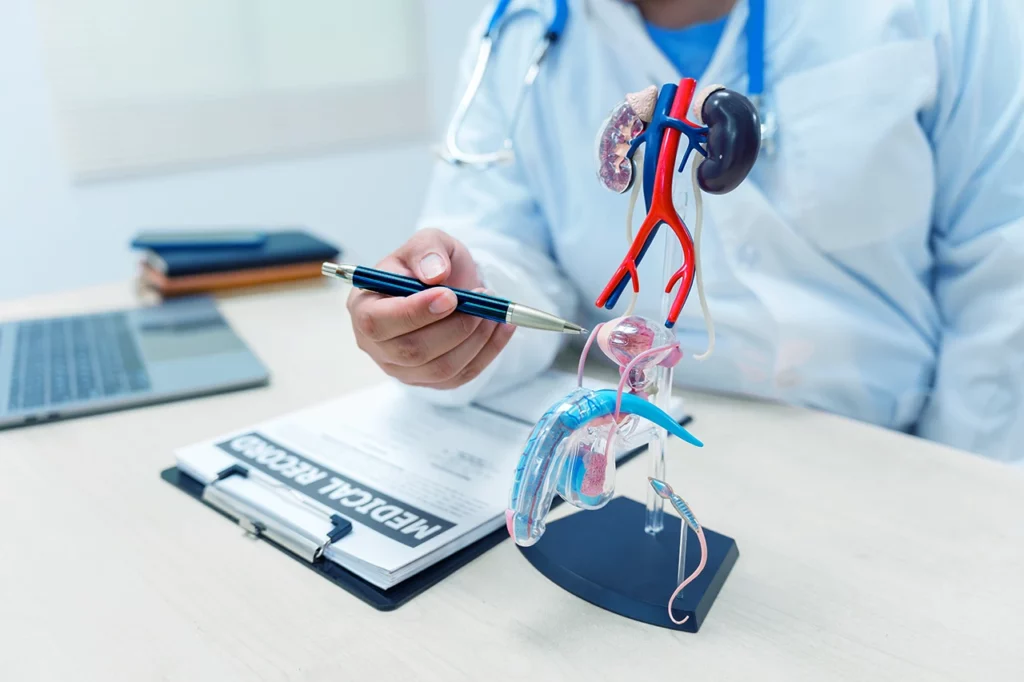Cystoscopy is a medical procedure that allows examination of the inside of the bladder and urethra using an instrument known as a cystoscope, similar to an endoscope, equipped with a camera at its tip to visualize the lower urinary tract in real time.
What is a cystoscopy
In general, cystoscopy is a safe and widely used technique in urology to diagnose and treat various disorders of the urinary tract.
During the cystoscopy, which can be performed under local or general anesthesia depending on the case, the cystoscope is inserted through the urethra until it reaches the bladder.
Once inside, the bladder is inflated to facilitate visualization of the internal structures, allowing direct observation of abnormalities such as tumors, inflammation, or strictures, which are narrowings.
The procedure usually lasts between 15 to 30 minutes, depending on any additional interventions that may be required, such as performing biopsies, removing stones, or treating certain conditions.
Cystoscopy in women
In women, cystoscopy is used to diagnose and treat various conditions of the lower urinary tract, which may include:
- Recurrent urinary tract infections: when a woman experiences frequent and treatment-resistant infections, it can help identify abnormalities such as urethral diverticula, stones, or tumors.
- Chronic pelvic pain or interstitial cystitis: helps rule out other causes of pain and evaluate the health of the bladder lining; ulcers or inflamed areas in the bladder can also be visualized in interstitial cystitis.
- Hematuria: the presence of visible or microscopic blood in the urine is a common indication for performing cystoscopy; it may be due to causes such as trauma or even bladder cancer.
- Difficulty urinating: pain during urination or nocturia (frequent urination at night) may be due to obstructions, strictures, or functional problems in the bladder or urethra.
- Evaluation after gynecological surgery: after procedures such as hysterectomy, cystoscopy may be necessary to verify there are no injuries to the bladder or urethra.
- Bladder cancer follow-up: in women with a history of bladder cancer, this procedure is key for monitoring and early detection of recurrence.
Cystoscopy in men
In men, cystoscopy is also used to diagnose and treat multiple disorders of the lower urinary tract, such as:
- Benign prostatic hyperplasia: allows assessment of the degree of obstruction caused by prostate enlargement.
- Recurrent urinary tract infections: this type of recurring infection may indicate structural abnormalities that can be identified through cystoscopy.
- Bladder stones: cystoscopy is useful for locating and, in some cases, removing urinary stones that cause symptoms such as pain, infections, or hematuria.
- Bladder cancer: allows diagnosis of suspicious lesions and collection of samples for biopsy, as well as follow-up in patients previously treated for this condition.
- Urethral stricture: urethral strictures, which may result from trauma, infections, or prior surgeries, can be clearly visualized during cystoscopy, facilitating their treatment.
- Blood in the urine: as in women, it is essential to search for the cause of hematuria.
- Bladder emptying dysfunction: in cases of chronic urinary retention or incontinence, cystoscopy allows assessment of sphincter and bladder function, as well as ruling out obstructive causes.
Cystoscopy is a valuable diagnostic and therapeutic tool in urology, significantly contributing to the management of urinary diseases and improving patients’ quality of life.
At the Saludora Medical Center’s Internal Medicine Department, we can provide you with specialized care. Contact us!
Fuentes
Cancer.org, NIH, Cigna


